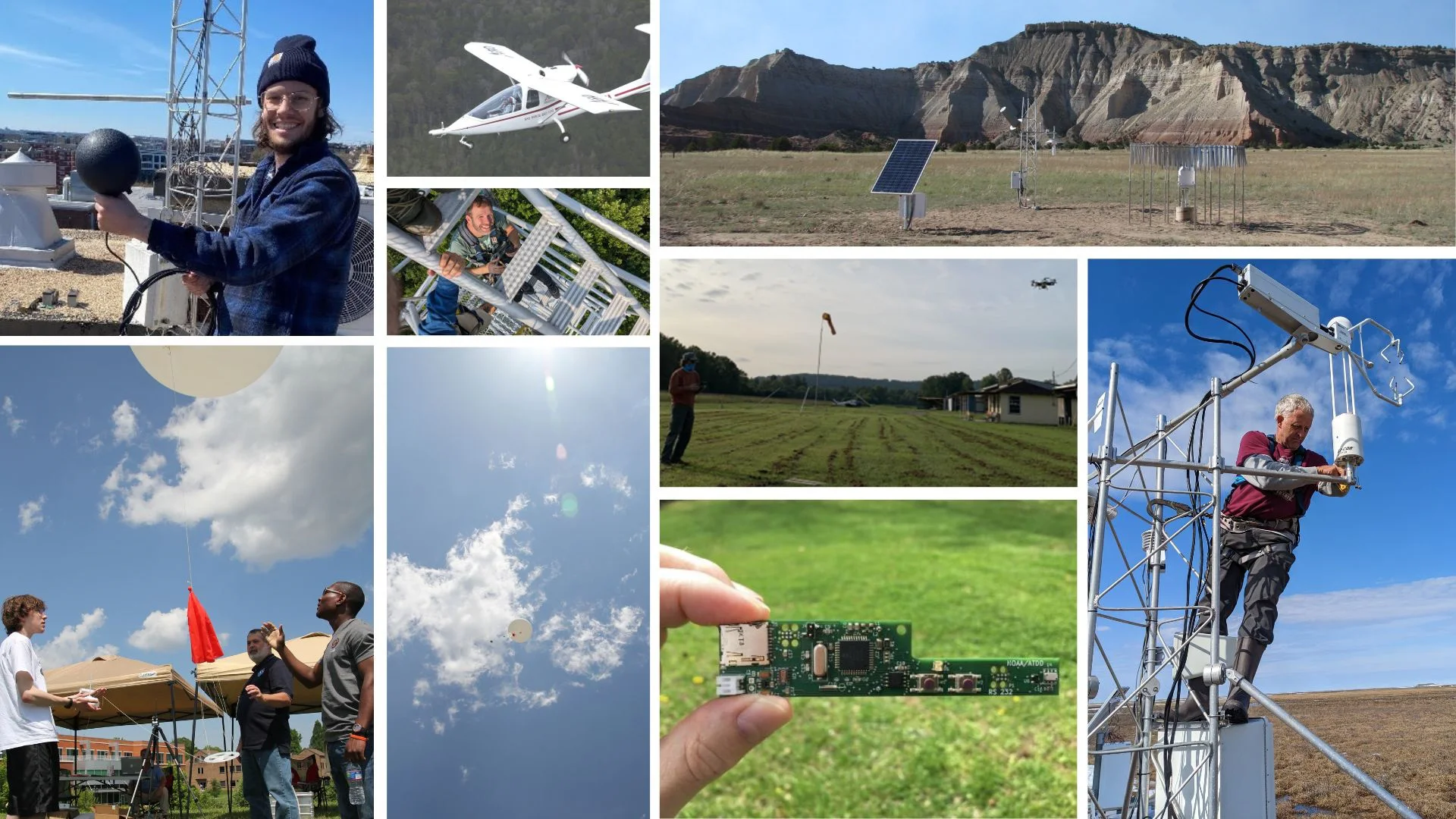
ORAU’s 50-year partnership with ATDD has thrived through innovation.
The Atmospheric Turbulence & Diffusion Division (ATDD) is one of the oldest research laboratories within the National Oceanic and Atmospheric Administration (NOAA). ORAU has been providing staff and expertise to ATDD since 1974, which means we celebrated 50 years of partnership in 2024. ATDD is a division within NOAA’s Air Resources Laboratory (ARL). In supporting ARL, ATDD is part of ORAU’s scope of work.
ATDD was initially established as a field station in Oak Ridge, Tennessee, just after World War II ended. At the time, ATDD’s primary mission was to provide specialized expertise in the event of an accident or incident where radionuclides were dispersed in the atmosphere. Since that time, ATDD has focused on critical national research in the fields of air quality, atmospheric dispersion and climate science.
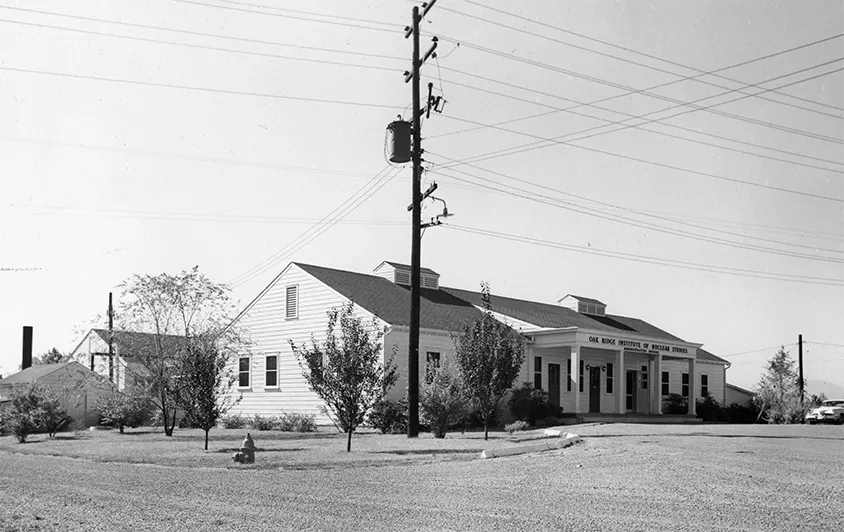
ATDD was established just after World War II to provide expertise in the event radionuclides were dispersed into the atmosphere.
ATDD’s main strength lies in the breadth and diversity of backgrounds of the staff: most have been trained in meteorology and engineering, with a few specializing in fields such as forestry and ecology. This experience has facilitated ATDD’s involvement in a variety of opportunities such as supporting air shows and launching weather balloons. More significantly, ATDD manages climate monitoring stations for the U.S. Climate Reference Network (USCRN). In 2024, there were 143 stations (116 in the continental U.S., 25 in Alaska and two in Hawaii). Each station is designed to primarily measure precipitation and temperature and secondarily, wind speed, surface temperatures, solar radiation, relative humidity, and moisture and temperature of the soil as well. The ORAU team assisted NOAA by installing and continually monitoring and maintaining these stations. “Our team is on the road at least 150 days a year servicing the USCRN towers,” ORAU Manager Mike Rutherford said. “We touch each tower in the network annually (and more often if needed) to ensure all instrumentation is working optimally and our readings are as accurate as possible.”
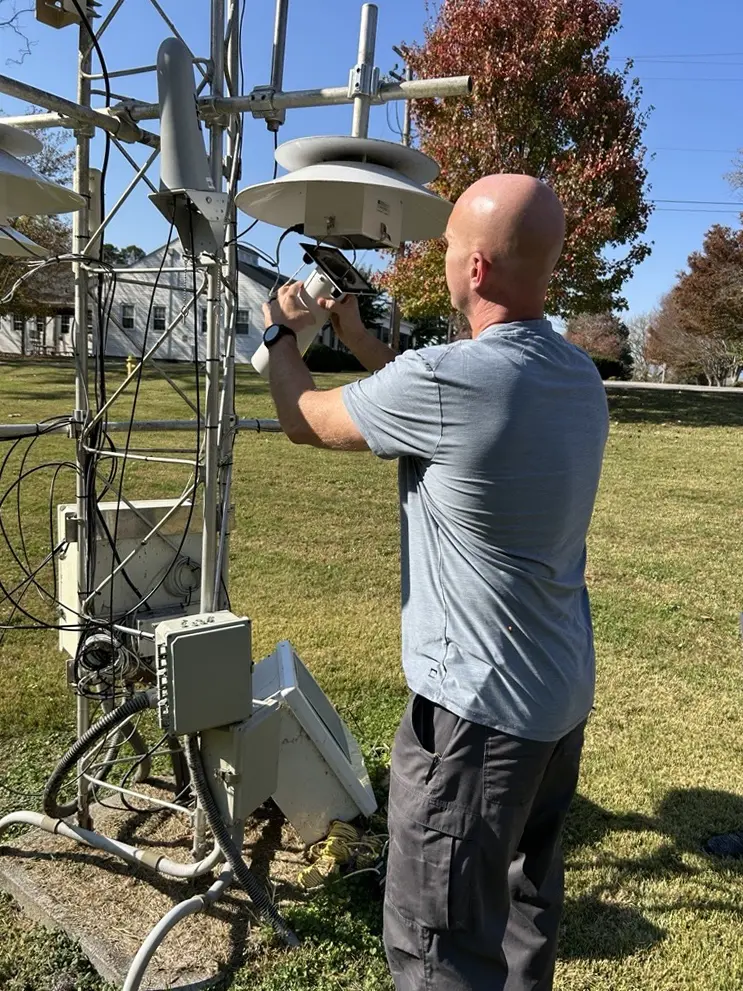
ORAU Manager Mike Rutherford checks one of ATDD’s towers.
Considering the design and resulting data of the USCRN, ATDD noted a gap in research. Whereas the USCRN weather stations gather data from mostly rural, untouched areas of the country, scientists and engineers also wanted to study weather and climate impacts in more populated neighborhoods. Building UrbanNet was the answer, which involved installing similar weather stations in metropolitan areas. There are now four locations in Washington, D.C., and one in College Park, Maryland. In urban settings, there are more variables such as vehicle emissions and heat from asphalt and concrete buildings. With the ability to collect data from cityscapes, ATDD can extrapolate valuable information about weather patterns in locations where more people live.
Behind the achievements ATDD has had with programs like UrbanNet are innovative thinkers and problem-solvers. “As much as we have to highlight in our 50 years, it’s really our people—not just our programs—who have positioned ATDD as a leader in environmental science,” said Kathy Rollow, ORAU director, ecology and environment operations. “We get the job done because we can answer challenges with innovative solutions.”
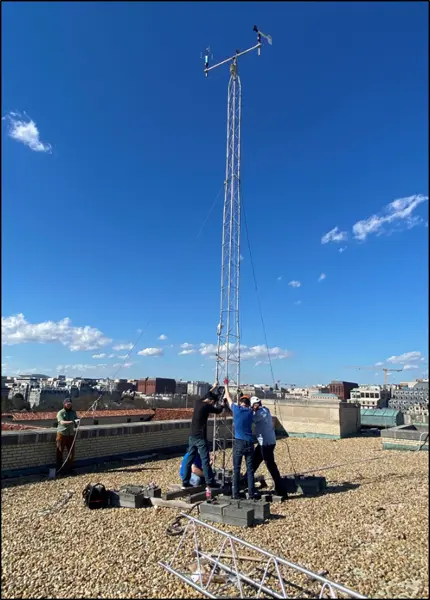
UrbanNet tower installation on the top of the Department of Commerce building in Washington, D.C.
To name a few examples of ingenuity over the years, longtime engineer ATDD Research Manager Randy White designed a custom fitting that resembles a hockey puck for ATDD’s weather station towers. All the instruments the team uses to gather data are necessary accessories, but add-ons must be attached with care, so that the integrity of the tower is not compromised. “Think of it this way,” White explained. “If you squeeze the sides of an aluminum soda can, what happens? It’s easy to crush, right? We don’t want to risk weakening our towers as we crank U-bolts, which is usually what’s used. That’s fine on a 10-foot section, but with most of our towers rising 30 feet, we needed a safer solution. As I thought through it, I wanted a design that perfectly matches the radius of the pipe. That way, when it’s squeezed, as we’re attaching any instrument add-ons, it won’t create a dent in the tower.” The “puck” has revolutionized this past problem for ATDD towers. White has constructed more than 30 pucks on-site in the ATDD machine shop and can make more as needed.
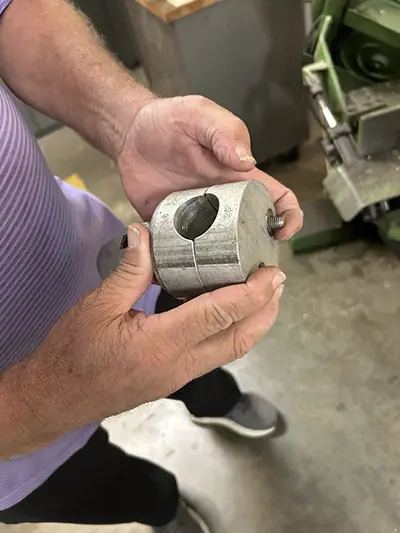
ATDD Research Manager Randy White holds his custom-designed “puck” for ATDD’s weather station towers.
Meanwhile, Dominick Christensen is a newer engineer to the team. He was collecting data from a long-term research tower when he realized it would benefit ATDD if they could visualize the data as it comes into the system. If an outlier is there, it may be hard to spot on an Excel sheet, but if it was on a graph, it would be quicker and easier to identify. So, he built a website that plots the data points on a graph. Right away, analysts noticed intermittent spiking, which led them to address an issue with an instrument.
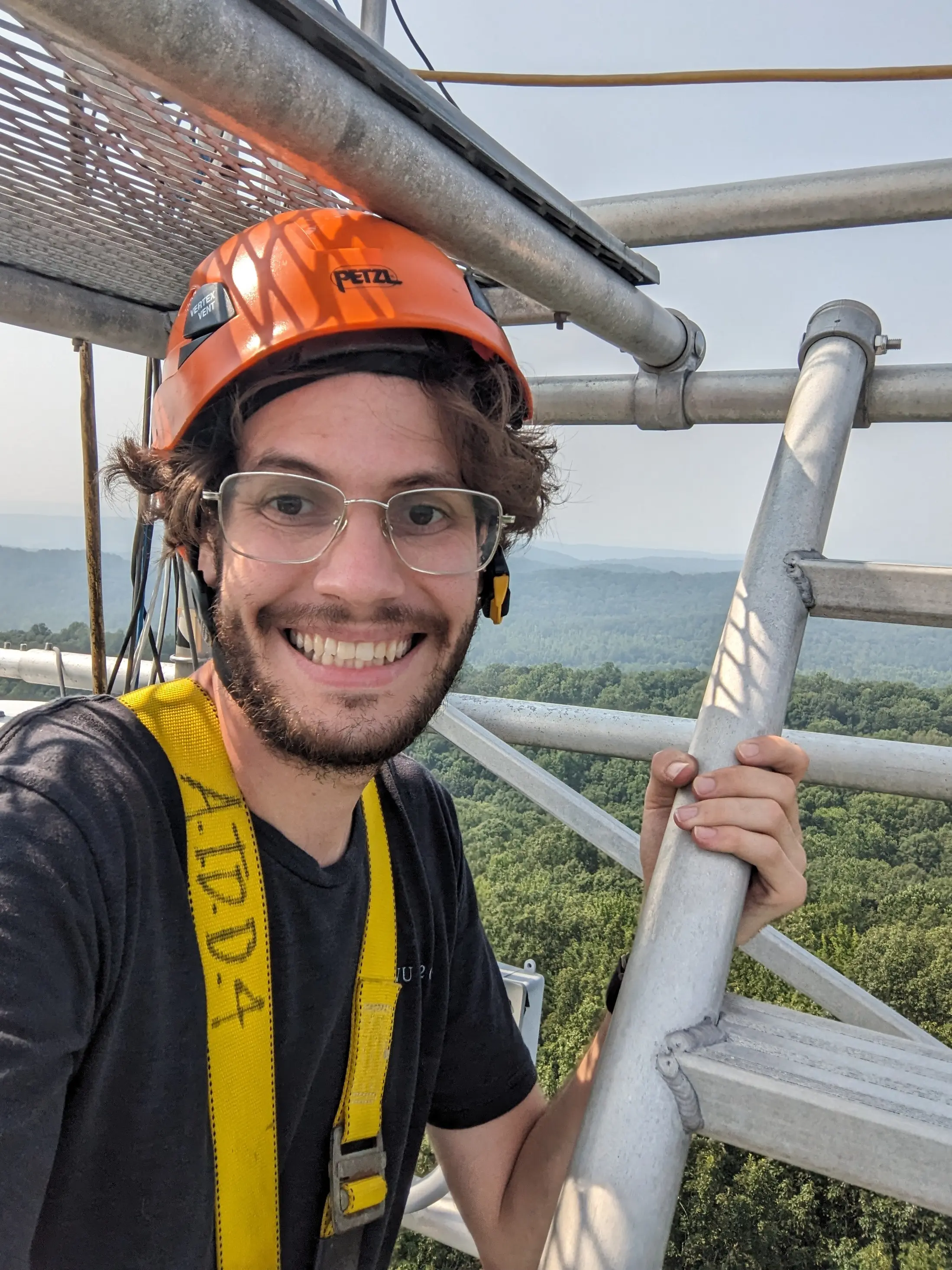
ATDD engineer Dominick Christensen works on one of ATDD’s weather station towers.
Engineer David Senn similarly recognized a couple of needs and developed two inventions in response. One idea was to design and build soil temperature probes that are inserted into the ground, measuring a subsurface temperature profile from one inch below ground level down to 39 inches beneath. Measuring at different depths produces a more complete picture of the data. Additionally, Senn designed and constructed a circuit board with two-way communication between the board and the intelligent soil probes. ORAU owns the rights to this board and other researchers are now using this technology!
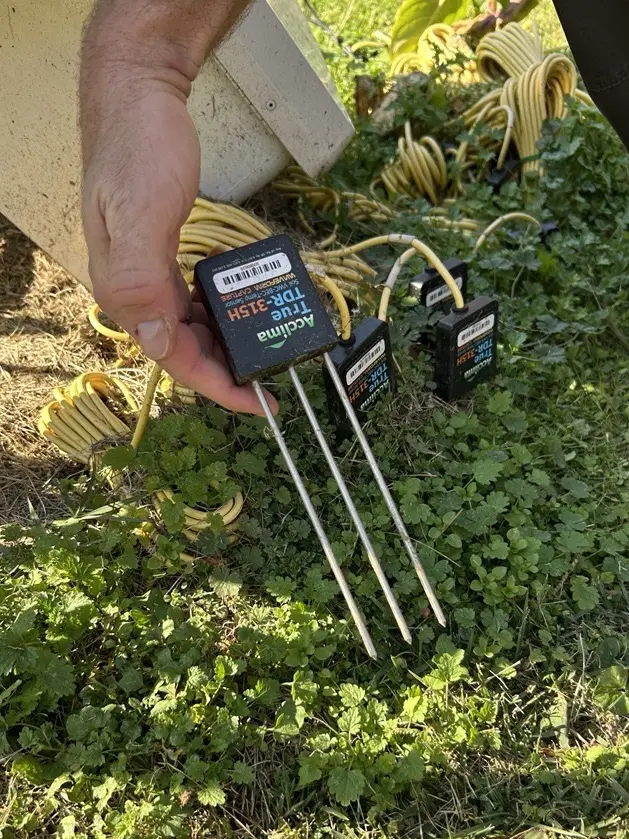
ATDD’s soil temperature probe pulls data from below the surface.
Upon retirement of ATDD’s drone pilot in 2023, Senn raised his hand and took on unmanned aircraft flights. He became a private pilot in 1982 and has earned his commercial pilot certificate for both airplanes and gliders—(He even owned a company that flew banners around the University of Tennessee, Knoxville’s famous Neyland Stadium!). Since he began flying, Senn has accumulated 1600 hours as a pilot in command of an aircraft. One love led to another, and he soon began flying radio-controlled model aircraft. With the opportunity to fly drones for NOAA, Senn earned his remote pilot certificate. The drones he operates are equipped with instruments and cameras designed to gather data specifically for the atmospheric boundary layer, the lowest portion of Earth’s air layer directly impacted by the planet’s surface.
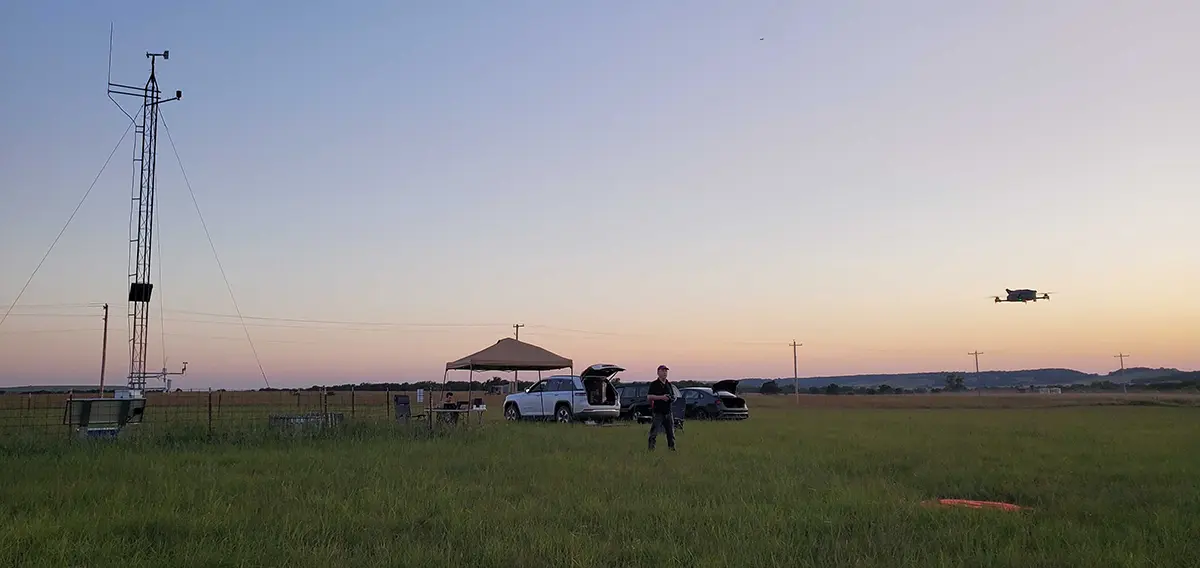
ATDD engineer and drone pilot David Senn pilots an unmanned aircraft flight.
With ORAU’s support over the decades, ATDD has played a pivotal role in advancing the scientific community's understanding of atmospheric processes and their implications on weather, climate and air quality. Leaning into ORAU’s consortium, ATDD has collaborated extensively with universities, other NOAA labs and international organizations to address some of the most pressing environmental challenges. The partnership between ORAU and NOAA-ATDD has been strategic and has led to invaluable research results. With forward-thinking leaders, both ORAU and ATDD foresee sunny skies as the team produces quality data that will continue to drive the future of atmospheric science for years to come.